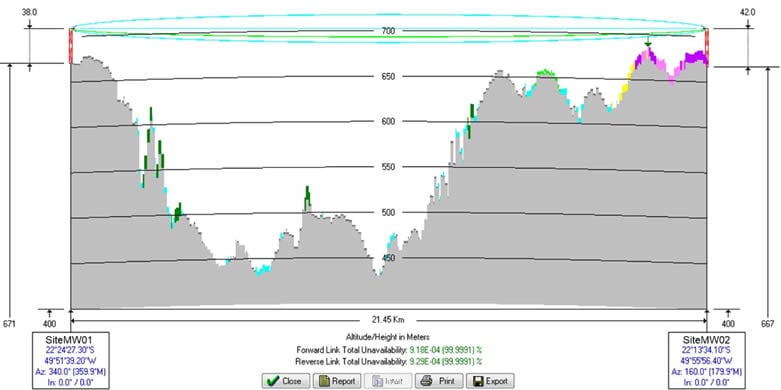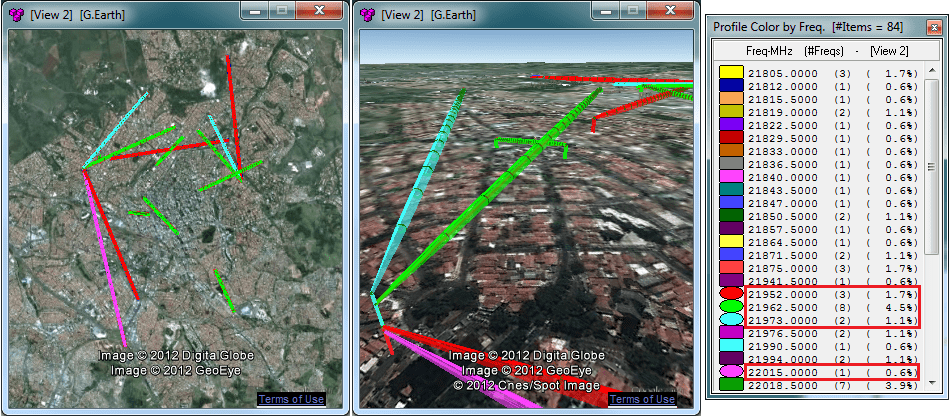CellNetwork

Planning Point-to-point Links
CellNetwork, a component of the CellDesigner suite, offers comprehensive analysis capabilities for point-to-point links operating at frequencies up to 60 GHz. This sophisticated tool enables the design of individual point-to-point links with consideration for terrain, land cover, tower heights, and multiple-knife edge diffraction effects.
The software provides visual representations of Fresnel zone obstructions and path loss profiles. It automatically calculates and displays tower height requirements for each link configuration. CellNetwork also supports the compilation of regional or national databases of existing links, facilitating comprehensive network planning.
For lower frequency bands, CellNetwork employs the Picquenard method (also known as the Deygout model) to calculate diffraction-induced attenuation. After determining the diffraction scenario, users can analyze additional parameters to assess compliance with ITU-R quality standards for link unavailability objectives.
Link Performance Calculation
In the case of frequencies exceeding 10 GHz, CellNetwork incorporates rain attenuation calculations for each link, followed by analysis of other relevant parameters. The software integrates various data inputs, including topography, land cover, imagery, equipment specifications, and regional climatic characteristics, to generate link performance assessments and compare results against ITU-R requirements.
CellNetwork accommodates analysis of fundamental channel arrangement types found in radio transmission systems: co-polar, cross-polar, and co-channel configurations. For each scenario, the software evaluates the degradation of the useful channel due to interference.
In performance calculations, users have the option to include improvement factors resulting from the implementation of countermeasure devices such as equalizers, coders, and diversity techniques (space, frequency, or combined space and frequency diversity).
This comprehensive approach enables telecommunications professionals to conduct thorough, high-precision analyses of point-to-point links, ensuring optimal performance and reliability across a wide range of frequencies and environmental conditions.

